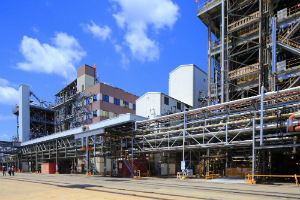BASF enters power agreements for clean energy supply of more than 20 BASF sites across the United States
BASF is committed to renewable energy solutions to power its sites across the United States and has entered into virtual power purchase agreements (VPPAs) for wind and solar power totaling 250 megawatts (MW).
They are designed to offset the carbon-intensive grid-supplied electricity being used at more than 20 of BASF’s manufacturing sites in several states across the country, from Texas to Michigan. “Renewable energy is an essential tool to reach BASF’s ambitious goal of net zero emissions by 2050,” said Michael Heinz, Member of the Board of Executive Directors, BASF SE and Chairman and CEO of BASF Corporation.
“We are committed to further improving our energy footprint in the region and we are eager to drive the energy transition for chemical manufacturing in North America.”
The combined agreements for the output of 250 MW of renewable generation capacity will result in the purchase of more than 660,000 megawatt hours (MWh) of electricity per year – the equivalent of electricity consumed by more than 90,000 average U.S. households. Based on EPA estimates, the VPPAs will offset more than 472,500 metric tons of CO2 emissions annually.
With these agreements in place, the share of renewable energy in BASF’s total North American electricity consumption will rise to more than 25%. “These agreements help us reach our clean energy goals in areas where the local electric utility does not supply adequate renewable power,” said Tobias Dratt, President, BASF North America. “At the same time, our financial commitment enables the realization of large solar and wind power projects and adds clean energy to the grid.”
To realize its ambitious emission goals, BASF is collaborating with various partners who are driving the sustainable change of the energy sector. The chemical company will purchase 100 MW of power generated by Dawn Solar. An additional 150 MW of renewable energy capacity will be added through transactions with EDF Energy Services. Last year, a collaboration with EDF Energy Services added 35 MW of wind capacity to the energy mix for BASF’s manufacturing sites in Freeport and Pasadena, Texas.
In another joint project with EDF Renewables, BASF’s property in Toms River became home to New Jersey’s largest solar project and the largest solar project built on a Superfund site in the United States. BASF aims to reduce its greenhouse gas emissions by 25% compared with 2018 by 2030 and achieve net-zero emissions by 2050. One important lever to bring down emissions is to replace fossil-based electricity with fossil-free electricity. BASF aims to secure the required amounts of renewable power it needs through a “make and buy” approach.







Comments